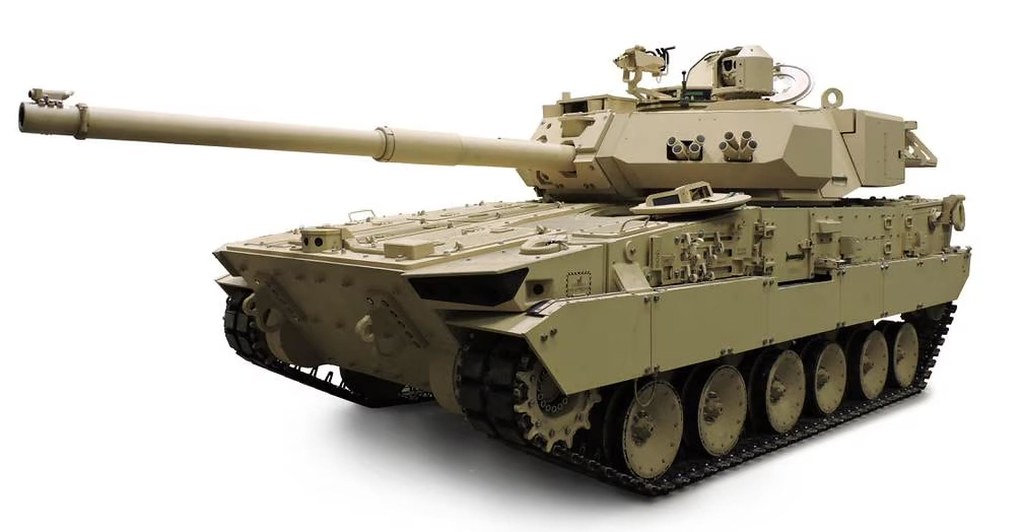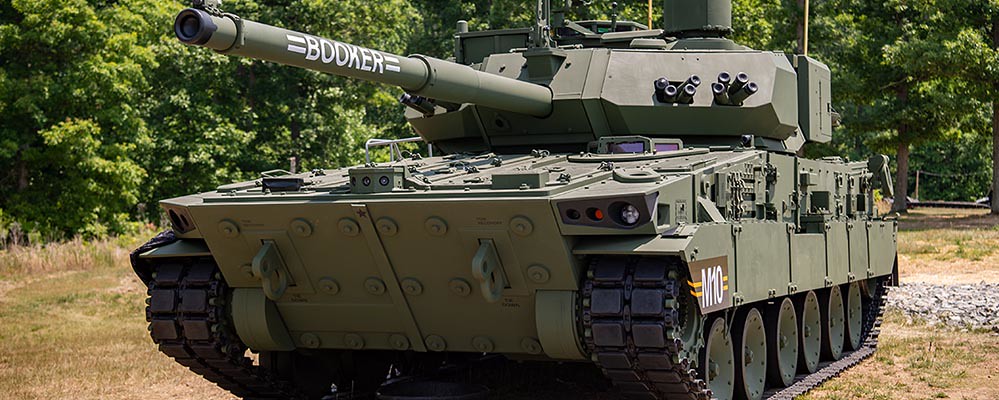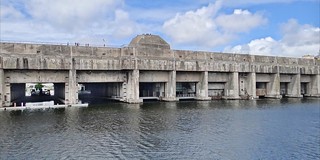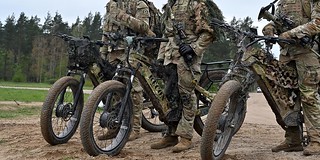The M-10 Booker light tank of the US Army, a vehicle with a Spanish ancestor
On June 10, taking advantage of the festival of its 248th anniversary, the US Army presented its new light tank.
The presentation was not surprising, except in regards to the name assigned to the vehicle. On June 28, 2022, the US Army announced the outcome of its Mobile program Protected Firepower (MPF), with an amount of 1.140 billion dollars. The winning company was General Dynamics Land Systems, which had submitted its Griffin II light tank, a 105mm gun version of its initial proposal, the Griffin I, which was equipped with a 120mm gun.

The initial contract consists of the purchase of 96 vehicles of this type, which will surely go mainly to airborne units. The announcement noted that the MPF will be the US Army's first newly designed vehicle in more than four decades, with the first equipped unit expected by the end of 2025. The new vehicle is also the first US Army light tank since the retirement of the M-551 Sheridan in 1996.

The United States has had a long tradition of light tanks. In 1935 he selected the M-2, an 11.4-ton vehicle armed with a 37mm cannon that fought in World War II. In 1941 the US Army introduced a derivative of the M-2, the M-3 Stuart, weighing 15 tons: more than 22,000 were manufactured during World War II. Less numerous but also popular was the M-24 Chaffee, weighing 20 tons and armed with a 75mm cannon. In 1953 the M-41 Walker Bulldog arrived, weighing 23 tons and with a 76 mm cannon.

These light tanks offered great mobility, but they proved very vulnerable, due to their poor armor. The Cold War led to the development of heavier tanks, such as the M-47, M-48, M-60 and finally the M-1 Abrams, capable of facing open field battles in a hypothetical war in Europe. The M-551 Sheridan was the last light tank of the US Army and its experience in the Vietnam War was not good. Its aluminum armor gave it little protection. Its 152 mm gun, capable of firing missiles and conventional ammunition, was excessive for such a light vehicle. When it came time to remove it from service, it was not replaced by another similar vehicle.

However, the experience of the United States in the wars of the last decades demonstrated the need for light tanks, first of all for reasons of mobility, since their excessive weight (57 tons in the M- 1A1 and 62 tons in the M-1A2) make their airborne deployment difficult, requiring large aircraft such as the C-5 Galaxy and C-17 Globemaster III. In addition, the Abrams is very effective in the open field, but in the cities it is excessive for certain operations

In the 1980s, the US Army had shown interest in getting a new light tank. FMC Corporation had released the M-8 AGS, an 18-ton tank with a 105mm gun that was intended to replace the M-551 Sheridan. There was some talk of purchasing 600 M-8 AGS for the Army and Marines, but the program was eventually canceled in 1996, and the Army focused its efforts on the Stryker, a wheeled combat vehicle. Finally, the Mobile Protected Firepower (MPF) program was launched in 2015, slowed down by the 2020 pandemic, until the final choice of the M-10 Booker.

The M-10 Booker weighs 38 tons. In addition to the aforementioned 105 mm gun, it has a 7.62 mm M-240C coaxial machine gun, an M-2 Browning heavy machine gun in the commander's hatch and 16 smoke grenade launchers. The vehicle has four crew members: commander, gunner, loader and driver. The barge has steel armor and an aluminum turret. It can reach a speed of 72 km/h and has a range of up to 560 km.

The chassis of the M-10 Booker is based on the Ajax combat vehicle, developed by General Dynamics UK and selected in 2010 for the British Army's Future Rapid Effect System programme, which will receive 589 vehicles of different variants under the Scout SV designation. In turn, the Ajax is a derivative of ASCOD, a joint project between Spain and Austria started in the 1990s and which gave rise to two infantry fighting vehicles: the Pizarro (Spain) and the Ulan (Austria).
The Spanish company that developed the ASCOD, Santa Bárbara Sistemas, was acquired in 2001 by General Dynamics, which in turn is the creator of the M-10 Booker, so in a way, it can be said that the US Army's new light tank has a Spanish ancestor.
|
Don't miss the news and content that interest you. Receive the free daily newsletter in your email: |
- Most read
- Eurofighter vs F-35: the opinions of professional pilots on these advanced fighters
- The icy deployment of the Spanish EF-18 and A400M planes under the snow in Lithuania
- The firearms used by the Pontifical Swiss Guard, the smallest army in the world
- The United States Army shows its electric bicycles for reconnaissance missions
- NATO highlights and shows the 'air power' of the Spanish aircraft carrier 'Juan Carlos I'
- The military salute: origin, types & curiosities
- The brutal 'touch and go' of a Lufthansa Boeing 747 at Los Angeles Airport

 ES
ES







Opina sobre esta entrada: